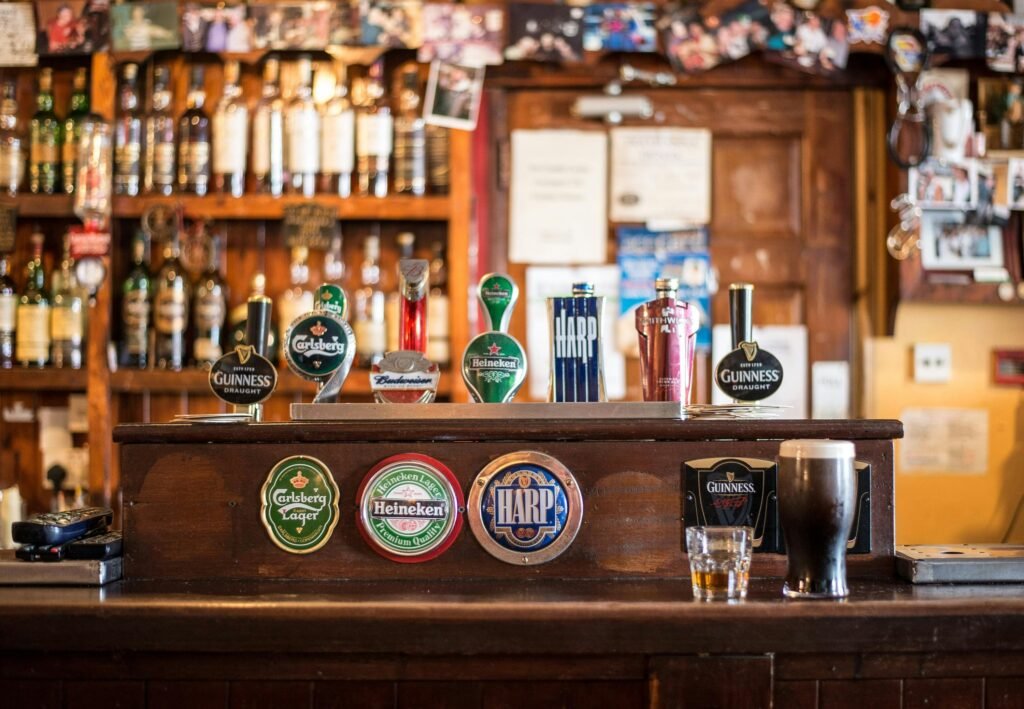The Allure of Slow Travel
In an era characterized by rapid-paced lifestyles and immediate gratification, slow travel emerges as an enriching alternative that emphasizes the joy of savoring experiences rather than hastily consuming them. This approach invites travelers to immerse themselves in the destinations they visit, allowing them to develop deeper connections with local cultures and communities. From taking leisurely walks through charming streets to engaging with residents, slow travel offers a slower, more meaningful way to explore the world.

One of the key benefits of adopting a slow travel mindset is the opportunity to appreciate the smaller details that often go unnoticed amid a rushed itinerary. Whether it is enjoying a cup of tea in a quaint café or pausing to read a book in a local park, these moments become cherished experiences that enrich one’s understanding of a location. By allowing time for reflection and interaction, travelers can cultivate a sense of belonging and appreciation for the nuances that define a culture.
This approach to exploring a new destination encourages individuals to dive deeper into local traditions, cuisine, and history. Instead of merely checking off tourist hotspots, slow travelers might find themselves participating in neighborhood festivals, sampling homemade dishes, or learning traditional crafts from artisans. Such experiences not only foster memorable encounters but also support local economies and promote sustainable tourism.
Furthermore, slow travel can have profound benefits for personal well-being. Taking time for leisurely exploration allows travelers to disconnect from the demands of everyday life, offering a chance for relaxation and mindfulness. Embracing this pace fosters a deeper appreciation for life’s simple joys, enhancing overall happiness and creating lasting memories. In essence, slow travel encourages a closer connection to both the destination and oneself, harnessing the beauty of a slow journey through life’s exquisite moments.
Getting Around: The Enchantment of Train Travel
Traveling by train in England offers a unique blend of convenience, scenic beauty, and cultural immersion that few other modes of transportation can match. The extensive railway network connects major cities, quaint villages, and historical landmarks, allowing travelers to seamlessly explore the diverse landscapes of the country. This accessibility makes it straightforward to travel from bustling urban centers to the enchanting countryside, often with stunning views along the way.

The benefits of train travel extend beyond mere transportation; they also encompass the experience itself. Passengers aboard the trains are treated to picturesque scenes of rolling hills, quaint hamlets, and iconic English architecture, creating an atmosphere that fosters a deeper appreciation for the journey. Each train ride transforms into a delightful adventure, with opportunities to witness the charm of rural England from the comfort of a seat. Whether it is a journey through the lush greenery of the Cotswolds or a ride along the coastline of Cornwall, train travel enables one to absorb the beauty and history of England at a leisurely pace.
Moreover, train travel in England promotes a relaxed atmosphere, where passengers can unwind, enjoy a light snack, or indulge in a cup of tea. The dining services available on many trains provide an opportunity to savor local specialties, elevating the overall experience. This allows travelers not only to reach their destinations but also to savor the journey itself. Taking the time to ride the rails fosters an environment conducive to meaningful connections with fellow travelers and a chance to strike up conversations about shared experiences.
Ultimately, the enchanting allure of train travel in England lies in its ability to enhance one’s travel experience. By prioritizing connections over speed, passengers can truly immerse themselves in the rich tapestry of culture and history that England has to offer.
Charming Villages: Gems Off the Beaten Path
England is renowned for its picturesque landscapes, and among its gems are quaint villages that encapsulate the essence of rural life. Castle Combe, often heralded as one of England’s prettiest villages, is a striking example with its charming stone cottages and tranquil atmosphere. Nestled in the Cotwolds, this village offers a glimpse back in time, with its well-preserved architecture and scenic views that attract travelers seeking serenity. The traditional tea rooms serve delightful refreshments, allowing visitors to savor local specialties while soaking in the peaceful surroundings.
Another village worthy of exploration is Bibury, located in Gloucestershire. Characterized by the historic Arlington Row—a row of ancient houses built in the mid-17th century—Bibury reflects the idyllic English countryside. The River Coln meanders through the village, enhancing its beauty while providing opportunities for leisurely walks along the riverbank. Local artisans and shops offer unique handcrafted goods, contributing to the village’s charm and inviting travelers to take home a piece of this enchanting place.
In contrast, Haworth stands out for its rich literary heritage as the home of the Brontë sisters. This village offers visitors a chance to explore the Brontë Parsonage Museum, where the famous authors penned their renowned novels. Its cobbled streets and moorland backdrop evoke a sense of nostalgia, transporting travelers into the world of the Brontë’s literature. The unique customs of Haworth, including its local festivals celebrating the arts, further draw visitors interested in cultural experiences.
Venturing beyond major cities allows travelers to enjoy the tranquility and beauty of the English countryside. These charming villages, with their distinctive characteristics and local customs, serve as perfect retreats, providing a reminder of England’s rich heritage and offering an enriching experience away from the hustle of urban life. The hidden treasures of Castle Combe, Bibury, and Haworth illustrate the diverse landscapes and stories that England has to offer, inviting further exploration of its less-traveled paths.
Literary Escapes: Old Bookstores to Discover
Exploring old bookstores in England can be a delightfully immersive experience, offering a sanctuary for those seeking literary treasures. These hidden gems often reside in quiet corners, each with a distinct character and history that beckons book lovers. One remarkable example is Barter Books in Alnwick, famed for its extensive collection of second-hand books and unique method of trade. Visitors are greeted not only by shelves packed with literary works but also with antique architecture that adds to its charm. The serene atmosphere invites you to lose yourself in reading, fostering a deep connection with the pages of time-worn books.
Another noteworthy destination, although located in Paris, is Shakespeare and Company, a bookstore that has captured the hearts of many literary enthusiasts. This iconic establishment has hosted writers such as Ernest Hemingway and F. Scott Fitzgerald, creating a rich tapestry of literary history. The inviting interiors and cozy reading nooks encourage patrons to settle down with a cup of tea, further enhancing the appeal of literature during a journey. Even if your travels do not take you to Paris, the notion of seeking out similar hideaways in England can be equally enriching.
As you embark on your travels through England, consider allocating time to wander through quaint towns and urban locales, in search of old bookstores. Each shop presents an opportunity to uncover rare editions, local authors’ works, and eclectic genres waiting to be discovered. These establishments not only provide a haven for relaxation but also serve as a reminder of the magic that literature can inspire. Immersing oneself in a book amid such a backdrop is a unique way to savor both the journey and the stories waiting to unfold. Delving into the world of literature throughout your travels enriches the experience, encouraging you to take a slow, meaningful approach to exploration.
Savoring Local Flavors: Toast, Tea, and Beyond
In England, few culinary experiences embody the spirit of the region as profoundly as the indulging of toast and tea. At a glance, these staples may appear ordinary, but their cultural significance runs deep, reflecting centuries of tradition. Toast, often served alongside butter or various spreads, has evolved into a canvas for unique toppings ranging from local jams to the traditional baked beans, making it an essential part of English breakfasts. The simple act of enjoying toast embodies comfort and warmth, often reminiscent of family gatherings and leisurely mornings.
Complementing toast is the revered tradition of afternoon tea, which has become synonymous with English culture. Afternoon tea, first popularized by Anna, the Duchess of Bedford, typically includes a selection of finely brewed teas, sandwiches, scones with clotted cream, and an array of pastries. This ritual not only offers an opportunity to delight in fine flavors but also serves as a cherished social activity among friends and family. The experience of sipping a warm cup of tea in the soft glow of an English afternoon can only be described as quintessentially British.
For those seeking to indulge in these local flavors, a visit to establishments such as The Ivy Chelsea Garden or Fortnum & Mason in London is highly recommended. These venues pride themselves on providing an authentic experience, with menus that celebrate classic English cuisine. Alternatively, smaller local cafes like The Tea Rooms in Bath offer a quaint atmosphere, perfect for enjoying homemade pastries with freshly brewed tea.
To recreate this delicious experience at home, consider trying your hand at making a traditional English breakfast. Key elements include poached eggs, baked beans, sausages, and, of course, toast. Another delightful option is preparing a classic afternoon tea spread with delicate finger sandwiches, freshly baked scones, and an assortment of sweets, served alongside your favorite blends. Such dishes not only celebrate England’s rich culinary heritage but also invite you to capture the essence of dining in this enchanting country.

Rainy-Day Pubs: Cozy Retreats in Inclement Weather
As the rain falls softly on the iconic English countryside, there is perhaps no better refuge than a traditional pub. These establishments are more than mere drinking holes; they embody the heart of local communities and offer an inviting atmosphere that contrasts the dreary weather outside. On a gloomy day, stepping into a cozy pub is like entering a warm embrace, where the flickering glow of candles and the crackling of a fire provide immediate comfort.
The aroma of hearty meals wafts through the air, enticing visitors with promises of traditional dishes like shepherd’s pie and bangers and mash. Locals gather around convivial tables, laughing and sharing stories over pints of local ales and ciders. The experience of sampling these beverages in a friendly setting enhances the overall enjoyment of one’s visit. Pubs often feature rotating taps for seasonal brews, allowing patrons to explore the vast array of flavors that English beverages have to offer.
Rainy days also provide the perfect opportunity to engage in classic pub activities. Many establishments boast a variety of board games, darts, or quizzes that facilitate interaction among patrons, further fostering a sense of belonging. Some pubs even host live music or open mic nights, wherein local talent can showcase their skills, adding an element of entertainment to an otherwise quiet day.
Ultimately, the charm of England’s pubs on rainy days lies in their ability to create a warm, inviting environment. This delightful coziness invites both locals and travelers alike to pause and enjoy life’s simple pleasures, from engaging conversations to memorable meals. A visit to these havens during inclement weather will undoubtedly enhance any journey through the captivating landscapes of England.
The Art of Observation: Finding Beauty in Everyday Moments
In a world that often prizes speed and efficiency, the practice of slowing down can reveal the hidden treasures of daily life in England. As travelers embark on their journeys by train, they are presented with an opportunity to immerse themselves in the serene landscapes that loop through quaint villages and bustling cities alike. With each passing mile, the perspective shifts, allowing for a deeper appreciation of the surroundings. Mindfulness, in this context, becomes an essential tool for fully engaging with the environment.
The beauty found in nature is one of the most striking aspects of a slower journey. From rolling hills adorned with wildflowers to the tranquil banks of winding rivers, every glimpse outside the train window tells a story. Observing the changing seasons and the intricate details of the English countryside encourages travelers to connect with the rhythms of the natural world. This connection fosters a sense of peace and wonder, inviting individuals to pause and reflect on the simplicity of their surroundings.
Additionally, architecture contributes significantly to the experience of travel in England. The charming cottages, majestic cathedrals, and distinctive bridges illustrate the country’s rich history and cultural heritage. By taking the time to marvel at these structures, travelers can appreciate the artistry and craftsmanship that went into their creation. Engaging with locals further enhances this experience, as conversations often reveal insights into the cultural context behind these landmarks. A simple exchange at a village shop or a chat with a fellow passenger can elevate one’s travel journey into an enriching encounter.
Ultimately, embracing a slower pace allows for a more profound connection to the places visited and the people encountered. By adopting a mindful approach to travel, individuals can uncover the everyday beauty that is often overlooked, transforming their journey through England into an unforgettable experience filled with moments of wonder.
Practical Tips for a Slow Journey
Engaging in slow travel through England offers a unique opportunity to immerse oneself in the local culture and scenery. The first step in embracing this travel philosophy is to plan an itinerary that allows ample time in each destination. Instead of hastily moving from one tourist hotspot to another, consider allocating multiple days to explore a single area. This approach not only reduces travel fatigue but also enables travelers to discover hidden gems that might be overlooked during a rushed visit.
When it comes to booking trains, it is wise to utilize online resources to check schedules and best fares in advance. Services like the National Rail or Trainline can assist in securing tickets that accommodate flexible travel. Remember that many regional trains offer discounts for off-peak travel, which can also enhance the slow travel experience by providing a less crowded environment. Opting for direct routes or scenic lines can further enrich your journey, allowing for moments of relaxation and reflection.
Connecting with locals is another cornerstone of slow travel. Engaging in conversations with residents can unveil insights into local traditions, food, and hidden attractions that guidebooks often overlook. To foster such interactions, consider participating in community classes, visiting local markets, or attending events and festivals that showcase regional culture. Additionally, being open to spontaneity will create opportunities for unique experiences—whether it is following a street performer, exploring quaint cafes, or wandering through historical neighborhoods.
Ultimately, slow travel requires a mindset geared towards valuing experiences over rigid schedules. Allow yourself the freedom to explore at your own pace, savoring each moment. By prioritizing connections and flexibility, you cultivate a richer understanding of the places you visit, leading to cherished memories that last well beyond the journey itself.
Reflections on a Slow Journey: Memories to Cherish
Traveling at a leisurely pace allows us to capture the essence of our surroundings in a way that hurried trips simply cannot. Slow travel invites us to engage more deeply with our environment, forging a connection that transcends mere sightseeing. As we traverse the picturesque landscapes of England aboard the gentle rhythm of a train, we find ourselves immersed in an experience that transcends the physical act of moving from one destination to another. Each stop offers unique moments that become cherished memories—a warm cup of tea enjoyed in a local café or the friendly conversation with a stranger waiting for the next train. These interactions enrich our journeys, making them about more than just the places we visit.
The intrinsic value of slow travel lies in the personal experiences and reflections it ignites. By taking our time to explore quaint villages, historic landmarks, and the vibrant culture of each locale, we allow ourselves to savor the simple pleasures. We can reflect on the journey itself, considering how our perspectives shift with each passing mile. Memories of laughter shared over the breakfast table or the awe experienced while gazing at a sunset are what ultimately stay with us long after the trip concludes. Encouraging readers to embark on their own slow travels opens doors to new discoveries and insights, allowing them to step outside the bounds of their daily routines and embrace a more fulfilling way to explore.
As our reflections on this slow journey come to an end, we urge you to consider the profound lessons learned through these experiences. Allow yourself to slow down, breathe in, and immerse in the beauty that surrounds you. We invite you to share your own stories and reflections, celebrating the joy and significance of travel that honors the delicate rhythm of life. In doing so, we enrich not just our own journeys but those of others, fostering a community that values meaningful travel experiences.




Thank you for sharing with us, I conceive this website genuinely stands out : D.